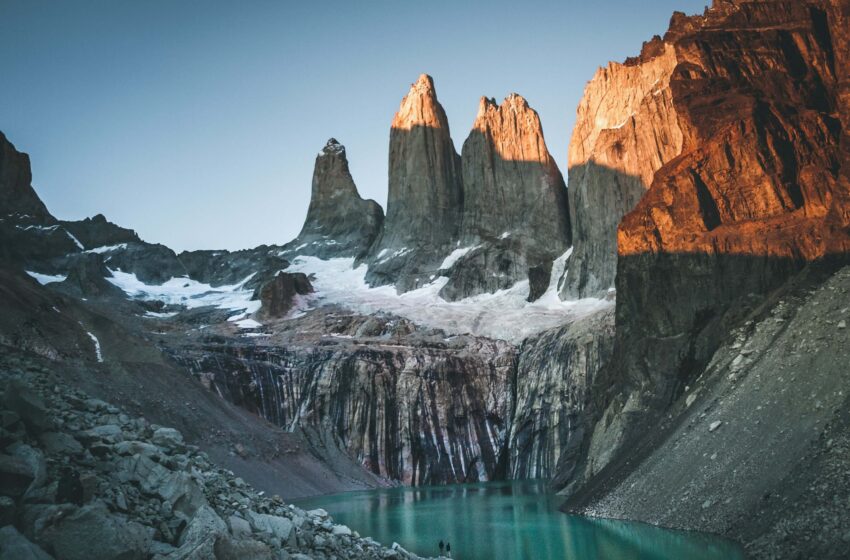
Argentina’s Only Travel Guide You Need For A Great Trip in 11 Easy Steps
- Destinations Americas
Cruisit Team
- April 30, 2022
- 0
- 4600
- 78 minutes read
Argentina’s Background
Argentina underwent periods of internal political struggle between conservatives and liberals, as well as civilian and military factions, following its independence from Spain in 1816. Following World War II, there was a long era of Peronist authoritarian leadership and influence in successive administrations, which was followed by a military dictatorship that assumed power in 1976. Democracy came to Argentina in 1983, and successive elections since then have demonstrated the country’s progress toward democratic consolidation.
Argentina is a big, elongated South American country. Its huge size, attractive towns, prominent festivals, and lively culture make it a favorite South American tourism destination. It is extremely diversified, including the highest and lowest locations in South America. Cerro Aconcagua is the highest peak in South America, while Salinas Chicas (40 meters below sea level) is the lowest point. Because of its vast size, the nation offers a diverse range of landscapes that combine breathtaking beauty with old cities.
Patagonia is a breathtakingly gorgeous region in Argentina’s south. It is an area that should not be overlooked. It boasts some of the most stunning scenery in South America, if not the globe. Argentina also boasts numerous enthralling cities that are brimming with life, culture, and celebrations.
“Argentina entices with its streetside tango,
barbecues, football, gaucho culture, and
the tremendous Andes“
Argentina’s landscape is diverse, ranging from rainforest in the far northeast to undulating Patagonia grasslands in the south. The Andes Mountains run along Chile’s border, whereas La Pampa, or the plain, is located in the country’s midsection. Each location has something unique and exciting to offer travelers, so if you can visit all of them, it will be well worth your time, albeit it will take a longer period to be able to take it leisurely.
El Caminito is a cobblestone-paved pedestrian strip where artisans peddle their crafts and tango dancers frolic along the pavement. One of the most iconic pictures of La Boca, Buenos Aires, is the rainbow-colored dilapidated houses bordering either side of the famed strip. La Boca, which translates as “the mouth,” is located near the mouth of the Riachuelo River.
La Boca was formerly a shipyard, and dock workers from Genoa, Italy, erected their dwellings there around 1830 out of cast-off ship pieces. Some speculate that the neighborhood’s name is a play on the word Boccadasse, which means “doorway to the sea” in Italian. To brighten up the shacks, the newcomers built tenements out of scrap metal and painted them with brilliant leftover marine paint to liven it up.
Immigrants from Spain, France, England, Ireland, Eastern Europe, and Greece soon joined the Italians. Factory and port employees would assemble to dance in the tenements’ central halls, vying for the attention of the few women available at the time. The cross-cultural mingling gave rise to tango, but the phrase wasn’t adopted until the late 1890s.
Argentina may be one of the most costly nations in South America, but there are some amazing money-saving methods you can employ.
- Have a history stroll in the cemetery of Recoleta
- Take a boat on the Ibera Wetlands
- Marvel at the immense Iguazú Falls
- Visit the well preserved San Ignacio Miní
- Tango in the streets in Av. Corrientes, Buenos Aires, one of the strongest in Tango culture
- Stroll the colorful street of Caminito, La Boca
- Hike and see the beauty of Torres del Paine National Park
- Take it slowly in Patagonia
- Football is a popular sport, just say Messi. If you have the chance to attend a game, you should take advantage of it, at the very least as a once-in-a-lifetime event.
- Fashion and art are extremely popular in Argentina. If you have the chance to go shopping, you’ll discover some fantastic boutiques with high-end apparel. If you’re in the city, you should definitely spend some time wandering through some of the best retail districts.
- Argentina prefers cash, despite the presence of ATMs and point-of-sale terminals. Some stores still refuse to take them or ask you to spend a particular amount in order to utilize them.
- Keep in mind that ATMs are only located in major cities, may not always operate, and charge exorbitant fees.
- Argentina allows passport holders from more than 80 countries to enter the country without a visa. However, verify ahead of time to see if you will require a visa.
- The mosquitos are so large that you can feel them land on you, which is a benefit since you know they are there before they bite, but who wants to see huge mosquitoes? This implies you should prepare your sprays and creams.
- SUBE cards, which are offered in supermarkets, can save you up to half the cost of public transit.
- Tipping is not anticipated and is not in the culture, although you can still leave 10%.
- In Argentina, a value-added tax (VAT) of 21% is levied on products and services. In most cases, it is already included in the price you see. Hotel VAT refund to overseas guests is occasionally provided if the stay was paid for with a foreign card, bank transfer, or in US dollars. Any shop with a Global Blue star will send you a form to fill out in order to have your VAT returned. For additional information, go to the Global Blue website.
- People go to Calle Florida to exchange their money for Pesos. If you inquire for the current rate from several merchants and have banknotes of USD 100 or €100, you will obtain a better rate. Keep in mind that you will need to double-check bogus bills.
- You can always exchange your currency at the airport. In comparison to many official exchanges, Banco Nacion offers a reasonable cost. Of course, it feels less adventurous than Calle Florida. You can also modify it in supermarkets, where you can buy something little and check the rate to see if it’s good, and then change it.
Crime
Argentina has lost its image as a completely secure location, with the repercussions of the 2001 and 2009 economic crises still lingering and poverty reaching 25%. Any fears you have, though, should be kept in context. The majority of visitors to Argentina face a low risk of becoming victims of crime. Most violent crime (concentrated in major cities) is directed against rich residents rather than foreign visitors.
The great majority of tourists to Buenos Aires experience no concerns. Follow the fundamental laws of carrying only what you need during the day, and keep costly goods like as cameras and jewelry hidden. When taking cash from an ATM, always proceed with caution. Pickpockets are especially prevalent in subte (subway) stations and bus terminals (notably Retiro in the capital), as well as on packed trains and buses.
Car theft is a typical occurrence; if you hire a car, be sure the insurance covers you, and always park in a parking lot or somewhere where someone will keep an eye on it. Keep windows closed and doors shut when driving in the city.
The use of drugs, notably marijuana and cocaine, is very popular among the younger generation, yet the consequences for using either are severe. We highly warn against purchasing or using them — aside from the hazards inherent in the narcotics themselves, doing so may expose you to some really dangerous people.
If you are the unfortunate victim of a robbery (asalto) or lose something valuable, you must file a complaint at the local police station for insurance purposes. Ensure that the police include the date and an official stamp (sello).
Health
Argentina has one of the greatest health-care systems in Latin America. Hospitals and clinics in Buenos Aires and other key cities like as Córdoba and Mendoza are of excellent quality and staffed by skilled medical personnel. Although public hospitals are available 24 hours a day and provide free care to patients, it is recommended that you obtain travel medical insurance for your trip.
There are no severe health risks linked with visiting Argentina. While no immunizations are required for admission into Argentina, ensure that you have all of the necessary vaccines or updates, including tetanus, polio, typhoid, and hepatitis A. In the extreme north, dengue fever outbreaks have occurred; other mosquito-borne illnesses to be aware of include yellow fever, malaria, and (in the far north) zika.
The tap water is safe to drink.
Shoulder Seasons
The ideal time to visit Argentina is probably in the spring. Argentina’s weather in spring September to November is virtually excellent almost everywhere, however chilly weather is still possible in the extreme south. You will enjoy less crowdy country with lower prices.
March and April are an excellent season to visit Argentina, particularly the provinces of Mendoza and San Juan for the wine harvests. Visit Patagonia and Tierra del Fuego during the autumn season to view the beech woods as their leaves change color. Lower prices and lesser tourists makes this a good time to visit, because you can go with less planing too.
High (Peak) Season
December to February is summer in Argentina and is the only season for climbing the highest Andean peaks, such as Aconcagua. It’s also the most dependable time of year to visit Tierra del Fuego, however it can snow at any time of year. In December and January, Buenos Aires is often hot and humid. You should also avoid portions of the north, where temperatures can soar and roads can become inundated by strong rains. This is the high (peak) season, its crowded, and you’ll need to book a lot of your trip ahead of time.
Off Season
June, July, and August are the winter months, while they can be considered the Off (Low) season, unquestionably marks the best time to visit the Andean ski resorts. In winter, blizzards may shut off settlements in Patagonia, and many areas close from April to October. Temperatures in the country’s north should be comfortable at this time of year, which is the best time to visit. Buenos Aires can be chilly in July and August.
By Plane
Generally speaking, flights to the country are extremely expensive, however they vary based on the route and season. Almost all flights to the country arrive in Buenos Aires. The most expensive months to visit Argentina are between December and February, around Easter, and in July and August. The greatest pricing are available during the low season, which runs from March to June and September to November. It’s also worth noting that travelling on weekends is more expensive.
The government began imposing “Airport Entry Fees,” commonly known as “Reciprocity,” in 2009. Visitors from specific countries that arrive at the airport are charged a fee depending on their citizenship. This tax was only being collected for arriving foreign aircraft at the two Buenos Aires airports at the time of writing. It was not gathered at any of Argentina’s other airports. It is also not collected from persons who arrive by land or water. Citizens of the United States are taxed US$160, Australians are charged US$140, and Canadians are charged US$75.
By Train
Non exist
Overland By Car
There are a few options to enter Argentina from Chile which include the borders between Mendoza and Santiago, Bariloche and Puerto Varas, and Salta and San Pedro de Atacama borders. Travel time ranges from 7 to 11 hours. A lot of these options are more costly than flying, and booking tickets to cross the border needs to be done ahead of time.
By Bus
From Chile
From Santiago to Buenos Aires serviced by Cata International and tickets start from $30 to $140 and the trip takes from 20 to 21 hours.
From Uruguay
You can take a bus from Montevideo to Buenos Aires that costs around 1 to 2 USD and takes 3 hours and 30 minutes approximately served by Buquebus.
From Paraguay
A bus from Asunscion to Buenos Aires is available once a day by three providers NSA ($120), JC Transporte ($70), and La Santaniana (From $25 to $75)
By Boat
From Puerto Montevideo a Ferry operated by Buquebus (Car Ferry) and takes around 2 hours to reach Puerto Madero in Buenos Aires and The fare costs $50 without a car. Colonia Express from Colonia de Sacramento, Uruguay, to Buenos Aires Costs $44.
By Plane
Domestic flights can shave of a day or more if you want to travel long distances in Argentina, particularly in Patagonia. The most common domestic flights will be through Aerolineas Argentina. Their flights will be the most readily available and likely the cheapest.Yet, they might not be the best. LATAM Airlines also offers domestic flights, although not as many and prices can be a bit higher. They have a far better experience to fly according to many travelers.
By Train
Rail lines in Argentina are run-down and restricted, making them an unfeasible mode of transportation. But still, Argentina’s trains are completely unique. This thrilling train system has 19 tunnels and 29 bridges, as well as stunning vistas from unbelievable heights. There is another service between Tucuman and Buenos Aires, which is similar to the Flying Scotsman. Also the top scenic train being Southern Tierra del Fuego Railway. Keep in mind the fastest train goes 160 km/h
By Bus
The distances are vast, and you will almost certainly spend a significant portion of your cash on travel. Ground transportation (mainly by bus) will provide a genuine sense of the country’s magnitude as well as an opportunity to observe the countryside. Buses are convenient and efficient throughout the country, but they are also not as cheap as they once were. You can expect to pay about four or five U.S. dollars for every hour of travel time. Still, this system is more affordable than flying and more far reaching than the train system.
The national bus network is vast, however services in isolated locations might be inadequate; in these cases, vehicle rental should be considered. But, as an example, taking a bus trip from Buenos Aires to Puerto Iguazu will take a minimum of 18 hours – and the ticket will be roughly the same price as a flight.
Taking the bus from the airport in Buenos Aires to the city center will take you anywhere from 2-3 hours, and it’s not a simple journey. Whereas a car ride will take about 40 minutes. Some hotels even have a shuttle service that can pick you up, so make sure you contact them and ask.
Many of the bus trips between cities are very long. If you take an overnight bus this will save you one night’s accommodation. It can be a little uncomfortable however. Also look out for restaurants that have all you can eat buffets. These options are very filling and often a good deal for food. Also make sure you pay for everything in the local currency. This will help ensure you’re not overcharged for your items.
By Car
We highly recommend you only rent a car within the city you’re in and not for traveling between cities. The reason why you don’t want to, is because driving your rental car will take roughly 15 hours to reach Puerto Iguazu. So driving locally in Buenos Aires, Córdoba, Salta, and Santa Fe provinces of Argentina instead of from city to city is recommended.
By Taxi
With close to 40,000 cabs in Buenos Aires, they are also readily available in almost all cities in Argentina. Uber works in Buenos Aires too but is kind of not legal, an alternative is Cabify, which is also often more affordable.
The cost of a taxi in Buenos Aires is regulated by the city government. First, the taxi in Buenos Aires is obligated to use the meter. So, check it that the driver turned it on. There is standard fare during daytime with a start fare of $45,80 ARS (USD 0,78 / €0,70). Afterward it is $4,58 ARS (USD 0,07 / €0,06) per 200 meters (670 feet). During night time from 22h00 until 6h00 in the morning, there is an increase of 20%.
To give you an idea. The cost of a taxi in Buenos Aires from Plaza de Mayo to the cemetery of Recoleta will cost you around $150 ARS (USD 2,50 / €2,25). A distance of 4,7km and estimated travel time of 15 minutes.
Most of the taxies in Buenos Aires do only accept cash. Therefore, the best way is to pay cash. We suggest having banknotes of $100 ARS with you. It’s easier and fewer chances to be a victim of a scam.
Taxi to Aeroparque airport? The pickup time needs to be 2h30 prior to the hour of flight departure. Taxi to Ezeiza airport? Pick up time 3h30 prior to the flight departure.
Common scams run around airport transport, One of them is when ending the ride the taxi driver will stop the meter and say how much it cost. For example, $200 ARS. You will take a banknote of $500 or $1000. You give the banknote, the driver will put it between the legs to look for exchange but the driver will say he doesn’t have enough exchange. The driver gives the banknote back. But in a blink of an eye, he switched it to a counterfeit banknote. That’s why we suggest having some $100 peso bills with you.
Of course the world famous scam of taking a longer route is pretty self explanatory. Use a GPS when you are with a taxi or ask them to use a GPS.
By Metro
Buenos Aires has a great subway system that is well connected with different parts of the city.
Local SIM
The leading phone networks in Buenos Aires are Personal, Movistar and Claro can be bought from mobile phone stores and from many kiosks. Many stores around Argentina sell Argentine SIM cards for as little as 50 ARS (0.50 USD). When you visit one of Claro, Movistar’s or Personal’s official stores, you can even get a SIM card for free. A 7-day data package with 1 GB of data would set you back at least 170 ARS (1.80 USD). Even if you want to splurge, the maximum you can pay is roughly $10. In Argentina, SIM card registration with your passport details is required.
You also have an option of purchasing a prepaid eSim card like from Airalo, SimCorner, or Nomad. The companies provide data only plans to put on a phone that is eSim ready, so make sure you your phone is compatible. It is also possible to opt-in for a WiFi Hotspot from Solis. Check before you travel because they service certain destinations. Airalo by far has the most coverage of almost 180 countries.
Local Internet & WiFi
Buenos Aires offers around 250+ free wifi hotspots, including those on the metro and Metrobus transportation networks. Users may use their cellphones to locate hotspots using the BA WiFi app. The BA WiFi app is available for download from your app store. Many bars, cafés, and restaurants provide free wifi to their customers. Internet access is frequently accessible in hotels across the remainder of the nation, although it is not always available during your excursions.
Top Places in Argentina

Parque Nacional Iguazu
The Iguazu Falls in Argentina’s north are one of the world’s seven natural wonders, located in the midst of a rainforest that connects Argentina to Brazil. The falls, which are part of the churning Iguaz river, are located in Argentina’s Iguaz National Park in Misiones. This park is located on the Argentine side of Iguazu Falls. Exploring the region involves a lot of walking, but it is definitely worth it. The park, which was founded in 1939, is one of South America’s largest forest protection regions. It was designated a Humanity Natural Heritage Site in 1986.
The Perito Moreno Glacier
The Perito Moreno Glacier in Argentina’s Los Glaciares National Park, located just outside the town of El Calafate in the country’s southwest, is notable for a variety of reasons. To begin with, it’s hypnotic. Second, it’s one of the few glaciers that grow rather than shrink, expanding by up to two meters every day – parts of the towering 60-meter glacier may even be seen falling into the lake as you stand there. Third, it is thought to hold the third-largest freshwater reservoir in the world.


Parque General San Martin
This park, located in the city of Mendoza, Argentina, features a lake as well as a magnificent rose garden that are both worth exploring. It was founded in 1986 and has grown in popularity since then. This gorgeous park was created by Carlos Thays, a French architect and landscape designer. The park is interesting since it was created to boost period health (epidemics of diphtheria, cholera, and measles), and it also serves as an alluvial defense. We recommend renting a bike to completely explore the area and watch the sunset from near the lake.
Recoleta, La Boca, and Tango
La Boca, the most colorful district in Buenos Aires, is home to the bizarre Caminito Street Museum, a wonderful pedestrian zone and open-air museum known for its vividly painted buildings, humorous sculptures, cafés, music, and tango dancers in the streets.
Glamorous Recoleta is another must-see, with its magnificent mausoleums sheltering the ashes of notable Argentinians such as Eva (Evita) Perón, as well as various public gardens, museums, art galleries, cafés, and boutique stores.

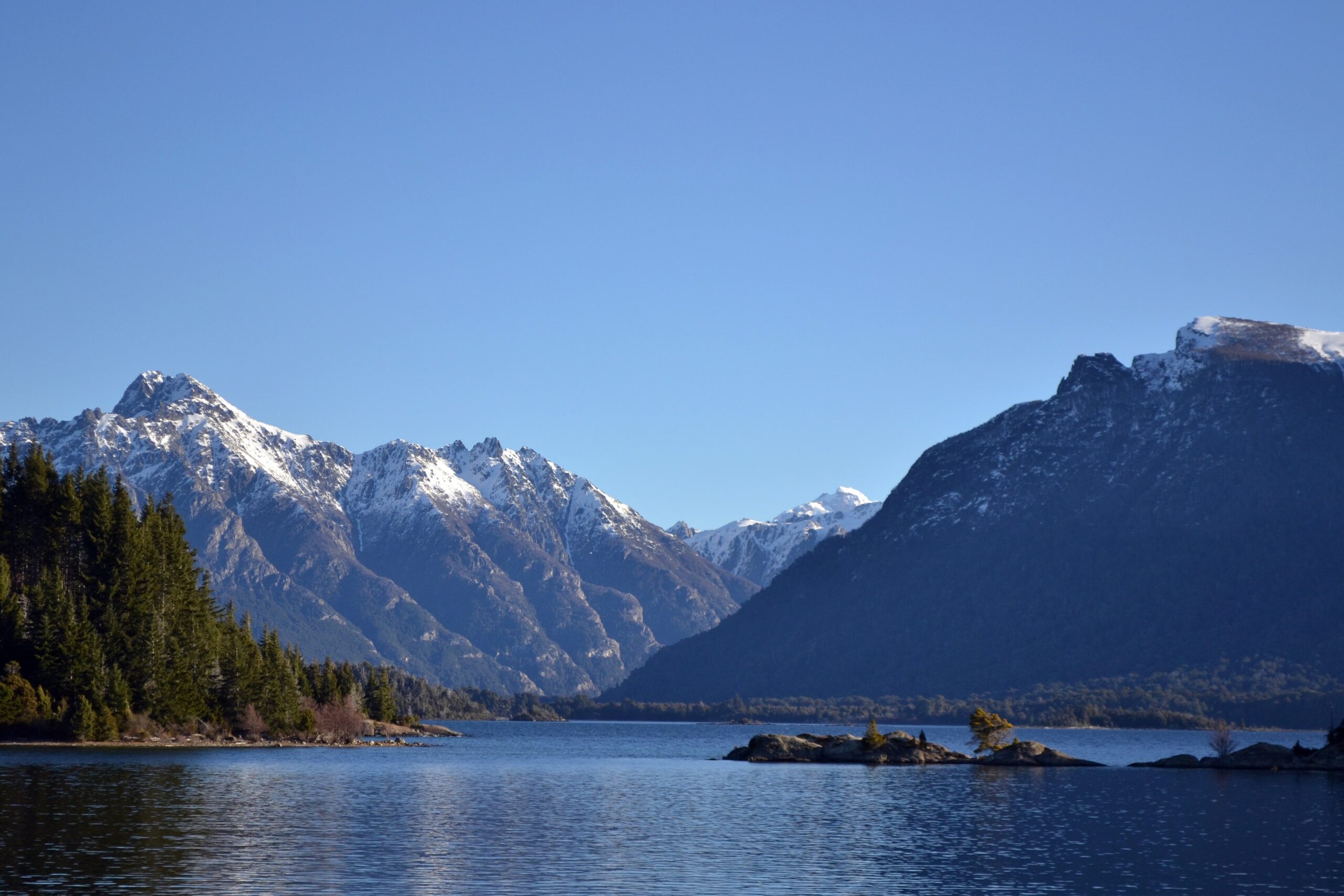
The Parque Nacional Nahuel Huapi
The Parque Nacional Nahuel Huapi is a large park in Patagonia’s Bariloche region. It’s a wonderful area to experience secluded natural beauty, with lakes and numerous animals, as well as Mount Tronador, a dormant volcano. A paradise for hikers and environment lovers, there are various mountain refugios, or rudimentary cottages, that may be used along the road if you’re searching for an overnight walk.
10-day Itinerary in Argentina (with extension options)
Days 1 (with possible 1 day extension)
Arrive in Buenos Aires
Your international flight will most likely be stopping in Buenos Aires, so be sure to take some time and explore this beautiful city! Most US flights arrive in the morning. So, this will give you a half-day to explore if you’re arriving from there.
Go to Plaza de Mayo. Then head to La boca the former shipyard, where Italian dock workers built their homes around 1830 out of cast-off ship scraps. Admire the area and its colorful streets and tango spirit.
After that head to La Recoleta, a huge cemetery with tons of beautiful tombs and famous dwellers. You can then have dinner near La Recoleta and walk around Caminito or have dinner in Puerto Madero – depending on your lodging’s location.


Days 2+
Explore Buenos Aires More
Tour the Casa Rosada, Argentina’s presidential residence. Officially, the opulent residence is known as Casa de Gobierno. Normally, the President lives in the Quinta de Olivos, Argentina’s official presidential home in Olivos, Greater Buenos Aires. The Casa Rosada Museum, located behind the palace, was built on the site of Buenos Aires’ first colonial fort. Make sure you book your tours, even if they are free, early!
Then head to Teatro Colon. Every nook of the Teatro Colón hides a mystery. Living the experience of a Guided Tour means learning about a bit of Argentina’s centennial history at the service of Argentine and global culture. Visitors may learn about architecture, stairs, sculptures, ceilings, and vitreaux by exploring the Main Hall, the Foyer, the Bustos Gallery, and the Golden Hall.
When you’re done, dine at a Parrilla and watch some firey tango! Check Rojo Tango show.
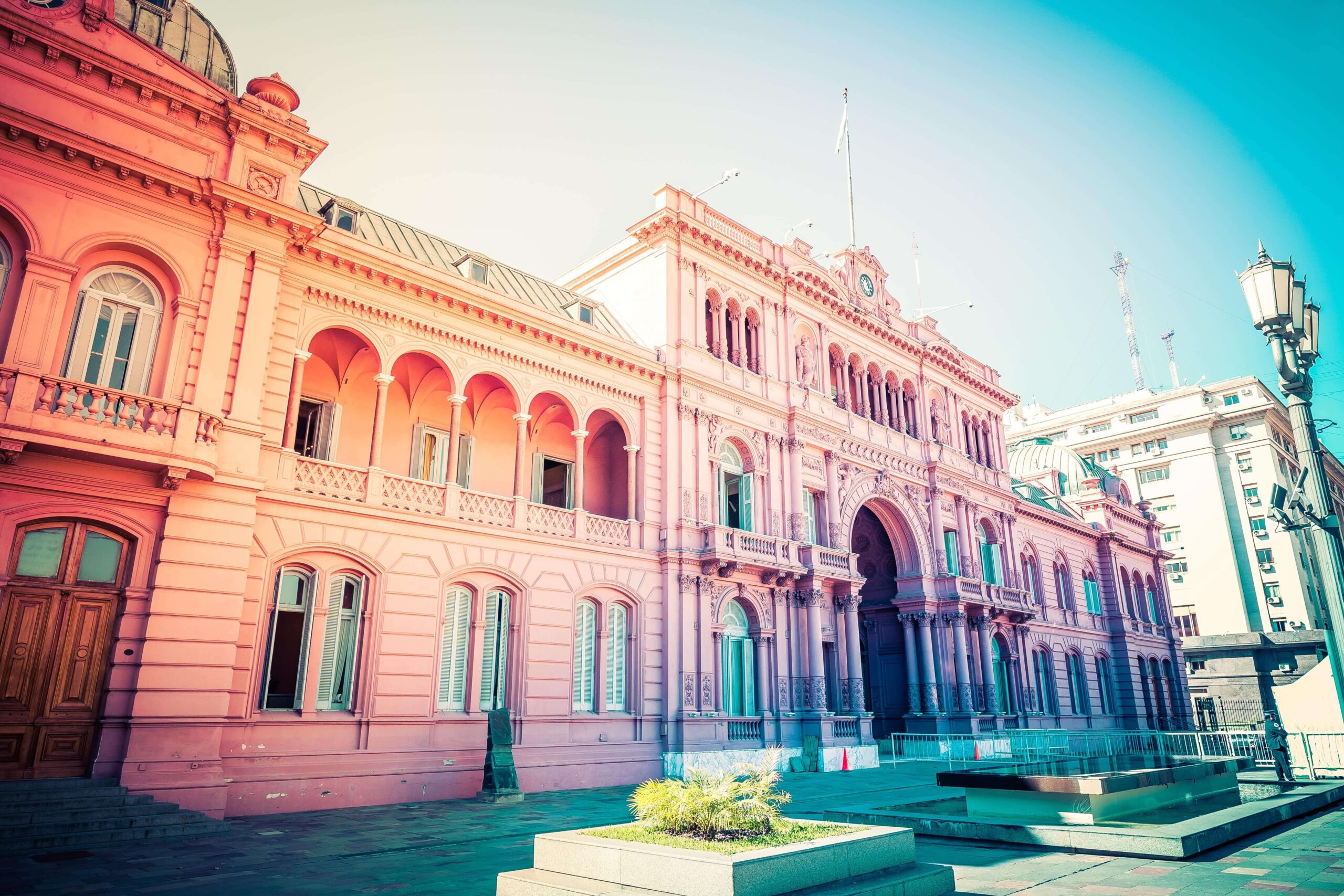

- Backpacker:
- Budget:
- Mid-range:
- High end:
This section will be added shortly.
There are several ways to move around Lubango. Taxis and minibusses are the most prevalent modes of transportation. There are, however, local buses and rental automobiles accessible at the airport.
By Taxi
Taxis are reasonably priced and can be hired practically with relative ease in town (mostly at the taxi station). Taxis can take you to numerous sites in the Lubango area, including Catumbela, Huambo, and Huila. They can also take you to places further away, such as Benguela or Luanda. The fare is not regulated, although, for a journey inside Lubango, it is normally between $150 and $300.
The actual charge may fluctuate depending on the time of day, tolls, works (possible routes), and various Angolan car firms.
By Bus
Mini-buses offer an alternative to taxis and they're more affordable than taxis if there are more than four people in your group. They operate on set routes that usually coincide with those of the local buses, so you will have to ask them beforehand where exactly they're going before boarding one.
There are several local bus companies operating in Lubango: Matola Transporte Aeoroportuario (MAT), Transporte Urbano da Huíla e Manica (TUMH) and Transfrica-Transporte Urbano Ltda (TTU). Local buses depart from their respective terminals every few minutes during peak times.
By Train
There is an outdated, neglected railroad station in Lubango, Angola. The structure resembles a modest, abandoned farmhouse, with a single story, a red tile roof, and several fractures in the stucco walls. The sole indication of life is a single man sitting at a desk in the center of the room, reading a newspaper and there won't be any other customers around. On the desk next to him is an old-fashioned cash register with a bell that chimes when you open it.
Despite its rundown look, this train station is very important to people who frequent it on a regular basis. The man behind the counter offers train tickets to those who want to travel anywhere in the country by rail; destinations include the provinces of Namibe, Moxico, and Huila. The trains are vintage and powered by diesel motors. Despite their antiquity, they are kept clean and well-maintained by the crew that drives them on a regular basis throughout their routes.
The inside is largely made of wood paneling, with a tattered red carpet running around the floor. Passengers can sit on either side of the aisle or stand if all seats are taken; owing to the large number of people who use this mode of transportation on a regular basis for work or education, this is not unusual.
Just note that traveling by train could take longer than usual, so make sure you span out your itinerary well to accommodate for the time lost on transit.

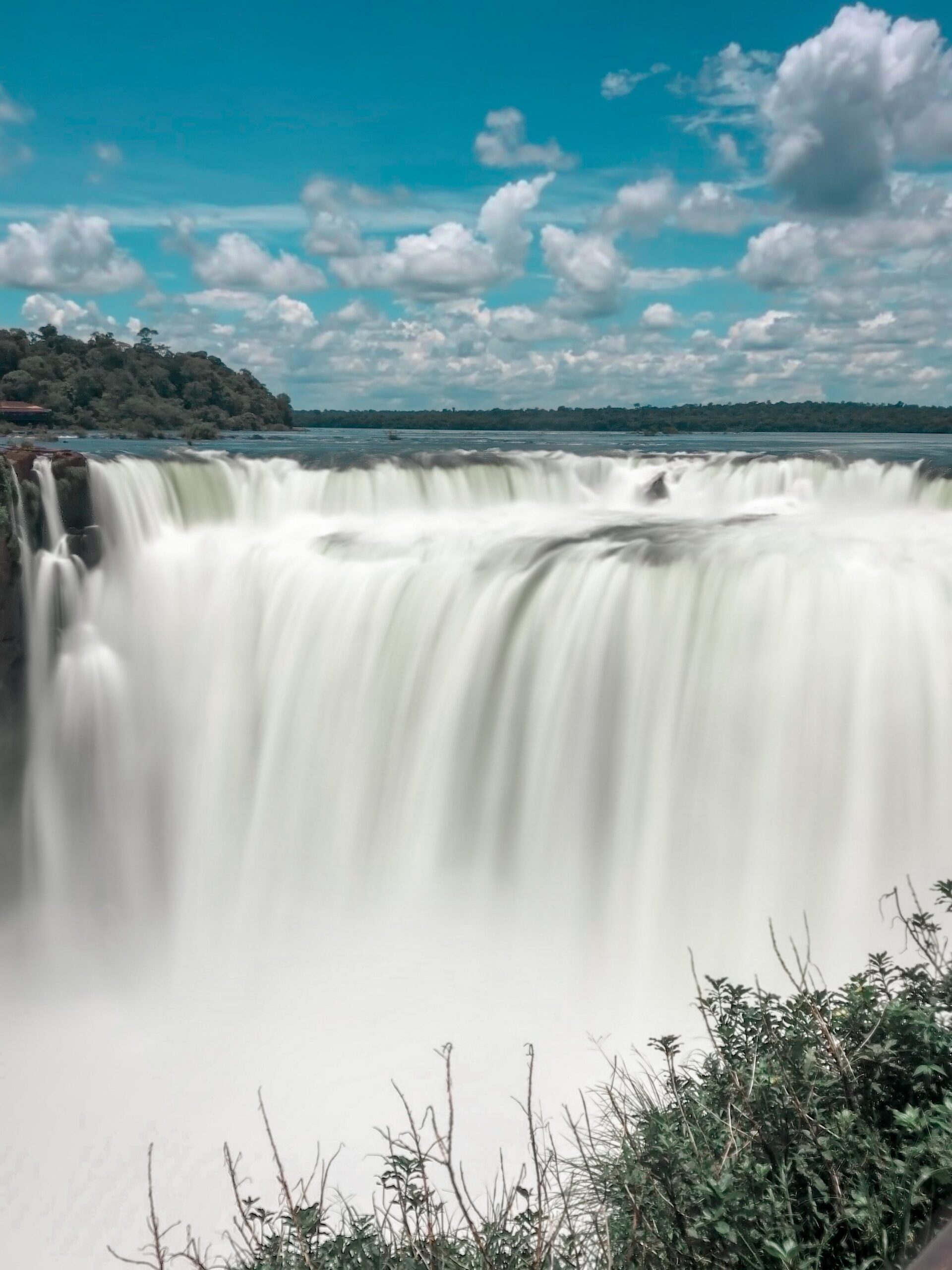
Days 3+
Fly to Puerto Iguazu
Try to catch an early morning flight (around 6 am). These are nonstop flights that will bring you to Puerto Iguazu by 8 a.m. This allows you plenty of time to leave your stuff at your accommodation before visiting the Brazilian side of the falls (you can do this via a tour company, taking the public bus or by taxi).
There are around 275 distinct cascades. The combined flow of these independent falls is the biggest of any waterfall in the world. It is far taller and twice as wide than Niagara Falls. During the rainy season, 450,000 cubic feet of water per second may pour over the falls. It’s a sight that makes your jaw drop, your heart race, and you realize how tiny you are.
If you’re going all the way to Argentina, Iguazu Falls is a must-see. Many people may underestimate it, but once they go, they rave about how much joy they had and how wrong they were! Iguazu Falls is one of the most renowned tourist destinations.
- Backpacker:
- Budget:
- Mid-range:
- Luxury: Belmond Hotel das Cataratas on the Brazilian side of the falls with views of the falls even when the park shuts.
Days 4+
Argentine Side of the Falls
A whole day is required to visit the Argentine side of Iguazu Falls. This side has a lot to offer! Everyone has a favorite side of the falls, but we have to admit that a traveler favorite is the Argentine side.
You could choose to skip another day of the falls in favor of adding an extra day to somewhere else on your itinerary or just cut the trip short.




Days 5+
Fly to Mendoza
Get up early and rent a bike at Bacchus Bikes. You’ll be provided with a bike, helmet, and lock, as well as a useful map on which the Bacchus staff will outline a wine route for you to pedal along. Stopping first at the family-run Pulmary organic wine bodega in the heart of town, you may sample some Malbec right from the tank and get a tour of the 100-year-old property.
Alternative
If you’re not a big fan of wine and pretty much don’t even care about this whole tour, there’s an alternative, take a day trip to Puente del Inca. This natural arch crosses the Las Cuevas River, a branch of the Mendoza River. The natural formation of this bridge will sure spin your head as to how it happened. Also, just when things can get better, a hikers dream is located 1km away, Aconcagua.
Return to your hotel for a snooze before heading out to the famed nightlife of Mendoza. Head to Plaza Independencia, then head for a lovely dinner. We recommend Aristides. Aristides has restaurants and Irish pubs adjacent to one another and is convenient to downtown by taxi for individuals who do not have a car. It is also an excellent location for greeting international visitors in their native tongue. On weekends, it is teeming with people, and entertainment is assured.
This section will be updated shortly.
Days 6+
Fly to El Calafate
Once you get to El Calafate, get aquainted with the place and take it slow as it’s most likely you will be arriving midday and you can be taking any day tours or do much.
However, you may want to try some traditional Patagonian food like Lamb al Asador. You can also go to an Ice Bar, which is pretty cool-d and shop at the artisanal market. If you have time you can hike El Calafate Mountain.
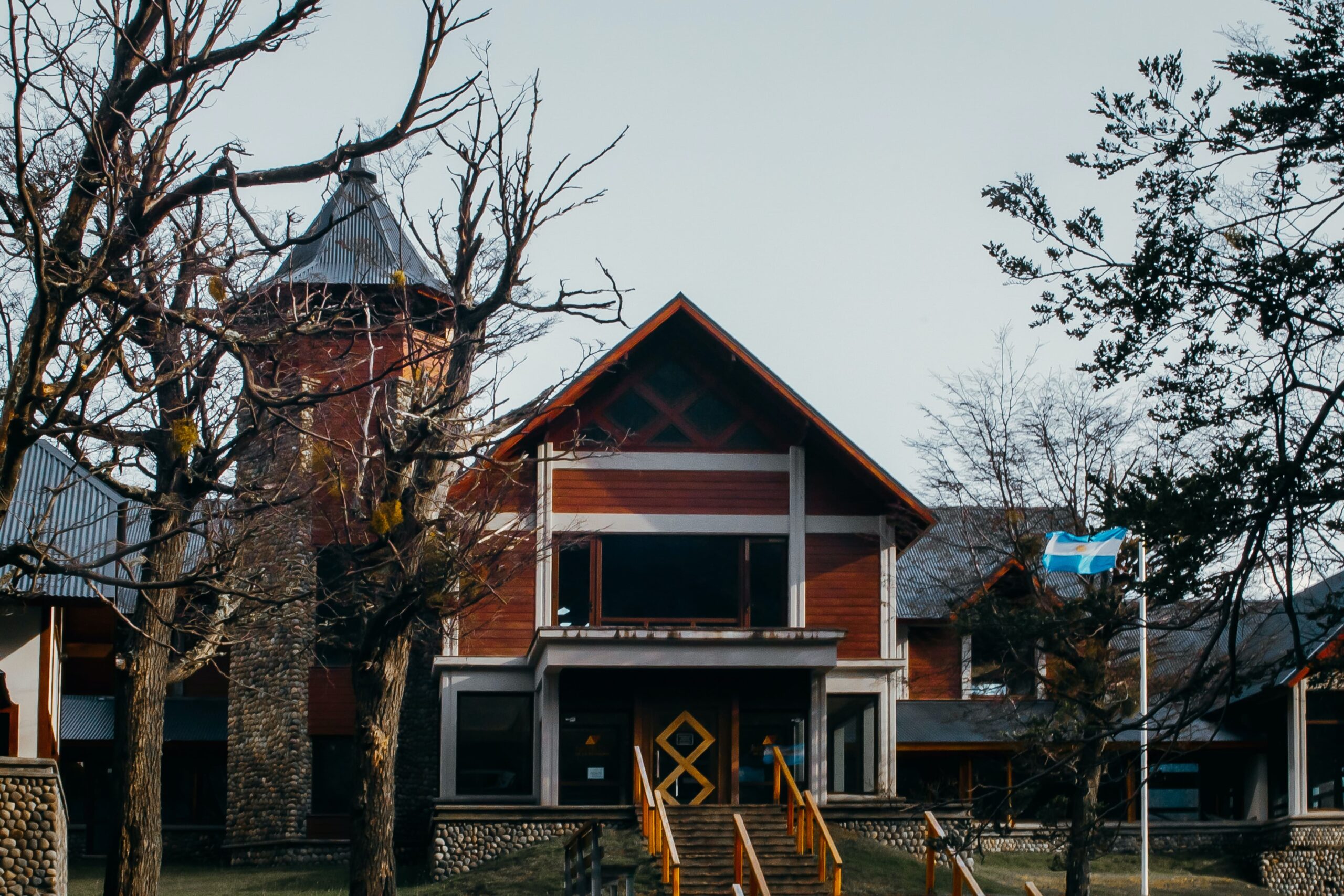
- Backpacker: Hostel America del Sur, Hostel Lago Argentino, Red House Hostel, Folk Hostel
- Budget:
- Mid-range: Design Suites Calafate, Hotel Amado, Todos Los Glaciares, Del Glaciar Libertador Hotel
- Luxury: Estancia Nibepo Aike, Xelena Hotel and Suites, Boutique Hotel La Cantera, Adventure Dome, Aparts Calafate Suites
This section will be updated shortly.
By Car
Your best bet in El Calafate is renting a car for almost everything. From touring nearby attractions or going on day trips. However, you will need to be alert on the roads.
By Plane
None needed as almost all activities are day trips around El Calafate.
By Bus
By Bus
To El Chalten
Take the bus at 8:00 a.m. You'll arrive at El Chaltén about 11:00 a.m. if you do this. You should board the 18:00 bus back to El Calafate. The cost is around $18 USD per way. If you buy your ticket at the bus terminal, you can pay in cash or credit card.

Days 7+
A trip to The Glaciers
The Perito Moreno Glacier is the major attraction of El Calafate (and one of Argentina’s greatest attractions in general! ), so you’ll start there. Perito Moreno can be seen in a variety of ways.
You may take a tour, rent a vehicle, or arrange for a private shuttle to transport you there. Plan on spending the entire day here, regardless of how you think about it. We encourage that you arrive as early as possible if you have ar rental car or a private shuttle. The park’s gates open at 8 a.m., but tours and buses do not arrive until 10 a.m. If you arrive at 8 a.m., you’ll have the landmark mostly to yourself for the next two hours.
Days 8+
Day trip to El Chaltén
El Chaltén is a budget-friendly destination for solo travelers. This little village in Los Glaciares National Park is famous for its hiking trails, which are all free and properly signposted. While staying numerous nights at El Chaltén is best for the serious hiker, a day journey to El Chaltén from El Calafate is also possible.
El Chalten is a wonderful area surrounded by breathtaking scenery and one-of-a-kind mountain peaks that rival those found in Torres del Paine National Park. It’s a sight that must be seen!
The trip to El Chalten is one of the most breathtaking aspects, and your tour will make several pauses to soak in the scenery.
The excursions last around 12 hours and include a climb to Lago de los Tres at the base of Mt Fitzroy. This is undoubtedly the most gorgeous hike in Patagonia, even more spectacular than Las Torres in Torres del Paine National Park, in my view.
If you’re not up for the task of trekking to Lago de los Tres (a difficult hike), there are several shorter pathways to explore, and your guide will assist you pick.
There are also two-day trips available, which let you to spend more time exploring El Chalten. This is also the point at which you should consider adding extra days, maybe by bypassing the opposite side of the Iguazu Falls.



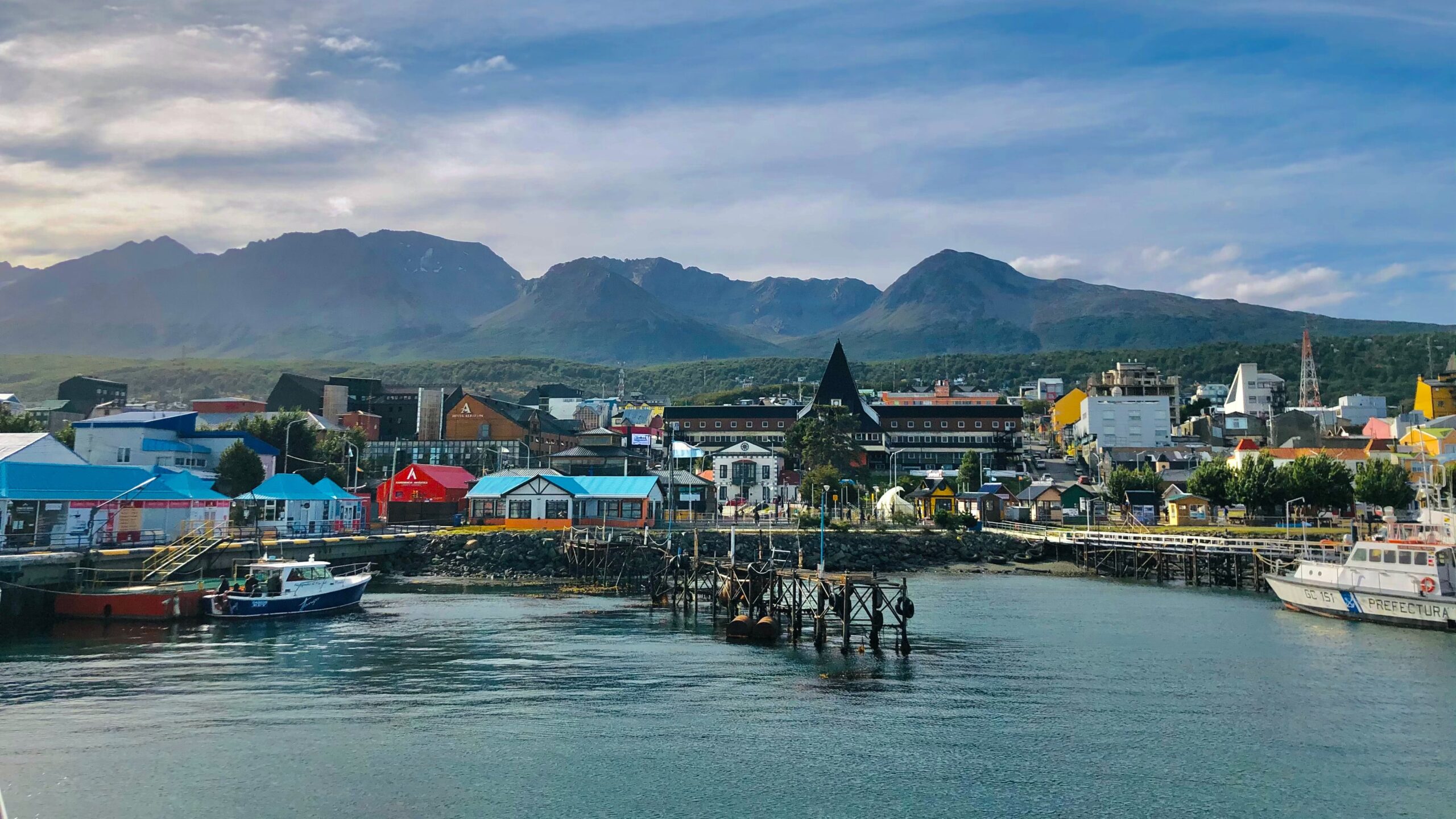
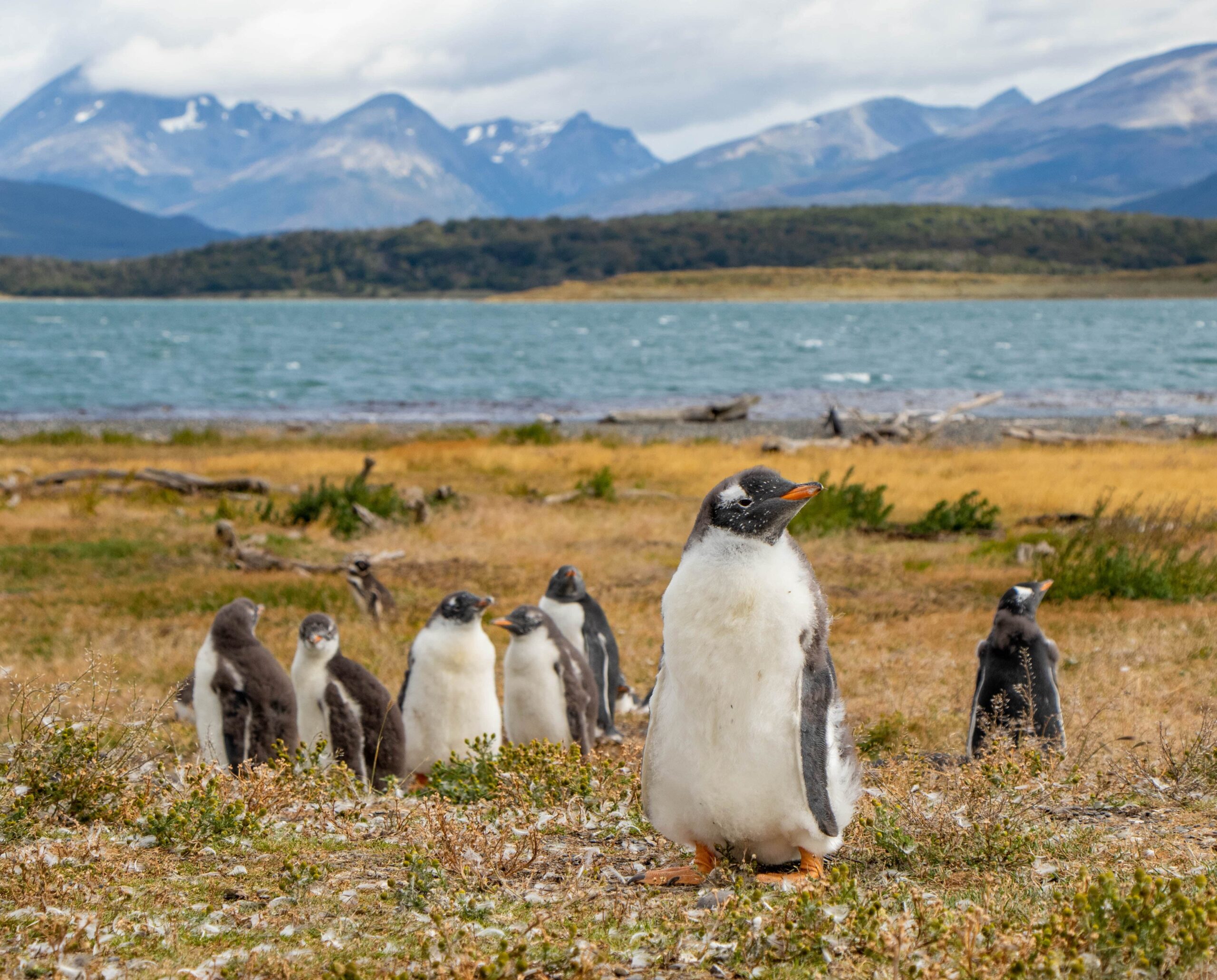
Days 9+
Fly to Ushuaia
The opportunity to stroll with penguins is a major motivation to visit Ushuaia. There are various excursions available to accomplish this with (some are much more cost-effective than others). Walking with the penguins on Isla Martillo, on the other hand, is up close and personal, and only 20 people are permitted on the island at a time, making it incredibly private.
However, the penguins are not present all year! So, before organizing your vacation, consult with a tour provider. Penguins do not visit in the fall/winter months and only come to nest in the spring/summer. If you chance to visit during a period when there will be no penguins, consider taking a catamaran cruise to observe the other animals in the region!
You could choose to skip this day as well in favor of adding it somewhere else. Maybe even adding the extra day back in Buenos Aires where you will be departing to your home country from.
- Backpacker:
- Budget:
- Mid-range:
- Luxury:
This section will be updated shortly.
By Car
Your best bet in El Calafate is renting a car.
By Plane
None needed as almost all activities are day trips around El Calafate.
By Bus
By Bus
Take the bus at 8:00 a.m. You'll arrive at El Chaltén about 11:00 a.m. if you do this. You should board the 18:00 bus back to El Calafate.
Days 10+
Departure time
Unfortunately, you’ll have to head back to Buenos Aires for international travelers. This will likely leave you with very little time on Day 10, unless you skipped Ushuaia in favor of adding yet another day in Buenos Aires.

The Most Popular Food in Argentina
Argentina’s cuisine is primarily dependent on cattle. It’s one of the world’s major beef-producing countries, and you can get wonderful and substantial steaks and barbecues all around the country. Although breakfast is often a light meal, lunch is somewhat filling. Dinner is usually not served until 10 p.m., although there is also a tea provided in the mid-afternoon. Because most restaurants don’t start serving supper until late in the evening, make sure you eat a lot during lunch.

Choripán
This is a classic Argentine sandwich. Football supporters typically enjoy “Choripán” from one of the area’s well-known food trucks. The choripán emerged in rural areas, when “gauchos” sat around a grill to prepare the packed sausage and, missing plates or space to properly dine, they stuffed it into loafs and seasoned it with spicy sauce. Chorizo is a type of pork sausage that may be eaten alone or paired with other meats (ask if there is a pork substitute). When it is crispy and well-done, it is grilled and placed on French bread. Chimichurri and salsa criolla are two common sauces that can be used.

Empanadas
The name literally translates as “covered in bread.” What’s not to like about that? One of Argentina’s most popular street foods. As an appetizer, it is also regularly offered. They were brought here by Spanish immigrants in the 16th century. Empanadas are dough pockets with filling within. They’re frequently baked or fried, and filled with various meats and veggies like chicken or beef.

Asado
The BBQ is a symbol of unification, connection, and family in Argentina. Nothing beats a tasty BBQ when it comes to entertaining guests. Beef comes in a variety of cuts, such as ribs and “vacio.” Meat that has been well-seasoned with salt and pepper and eaten with salads or French fries has the best taste. Argentina’s beef is among the best in the world because to superior breeding. As a result, one of the most well-known meals is “Asado.”

Chimichurri
Chimichurri is a herb, garlic, and vinegar sauce that is often served with meat. It is most commonly found in the Patagonia area, although it is available elsewhere. Each Argentine prefers to add his or her own spin to the sauce. It can be found at an asado or with your bread basket at a restaurant.

Sandwiches de miga
This light, crustless sandwich is prepared with buttered bread, cured meat, and cheese. It’s commonly offered at gatherings and is similar to a tea-time sandwich in the United Kingdom.
What's the Travel Budget in Argentina?
Flights
- Flights start at roughly $250 from nearby countries. Tickets however on average cost around $650 and can cost more depending on which class and from which country you depart from.
Accommodation
- Nomad Backpacking style travelers can expect to spend around $75 for a week
- Budget travelers can expect to spend around $150 for a week
- Mid-range travelers can expect to spend around $360 for a week
- Luxury travelers can expect to spend around $720 for a week
Food Budget (Three meals and drinks)
- Nomad Backpacking style travelers can expect to spend around $9 per person per day
- Budget travelers can expect to pay around $21 per person per day
- Mid-range travelers on average would cost $30 to $40 per person per day
- Luxury travelers can expect to pay around $40 to $60 per person per day
Overall Budget Styles (Not including Flights, Tours, Transportation, or Car Rental)
- Nomad Backpacking style travelers can expect to spend around $160 for a week
- Budget travelers can expect to spend around $340 for one person for a week
- Mid-range travelers can expect to spend around $700 for one person for a week
- Luxury travelers can expect to spend around $1200 for one person for a week
Flights
- Flights start at roughly $200 from nearby countries. Tickets however on average cost around $900 and can cost more depending on which class and from which country you depart from.
Accommodation
- Nomad Backpacking style travelers can expect to spend around $75 for a week
- Budget travelers can expect to spend around $150 for a week
- Mid-range travelers can expect to spend around $360 for a week
- Luxury travelers can expect to spend around $720 for a week
Food Budget (Three meals and drinks)
- Nomad Backpacking style travelers can expect to spend around $9 per person per day
- Budget travelers can expect to pay around $21 per person per day
- Mid-range travelers on average would cost $30 to $40 per person per day
- Luxury travelers can expect to pay around $40 to $60 per person per day
Overall Budget Styles (Not including Flights, Tours, Transportation, or Car Rental)
- Nomad Backpacking style travelers can expect to spend around $160 for a week
- Budget travelers can expect to spend around $340 for one person for a week
- Mid-range travelers can expect to spend around $700 for one person for a week
- Luxury travelers can expect to spend around $1200 for one person for a week
Flights
- Flights start at roughly $200 from nearby countries. Tickets however on average cost around $900 and can cost more depending on which class and from which country you depart from.
Accommodation
- Nomad Backpacking style travelers can expect to spend around $75 for a week
- Budget travelers can expect to spend around $150 for a week
- Mid-range travelers can expect to spend around $360 for a week
- Luxury travelers can expect to spend around $720 for a week
Food Budget (Three meals and drinks)
- Nomad Backpacking style travelers can expect to spend around $9 per person per day
- Budget travelers can expect to pay around $21 per person per day
- Mid-range travelers on average would cost $30 to $40 per person per day
- Luxury travelers can expect to pay around $40 to $60 per person per day
Overall Budget Styles (Not including Flights, Tours, Transportation, or Car Rental)
- Nomad Backpacking style travelers can expect to spend around $160 for a week
- Budget travelers can expect to spend around $340 for one person for a week
- Mid-range travelers can expect to spend around $700 for one person for a week
- Luxury travelers can expect to spend around $1200 for one person for a week
Flights
- Flights start at roughly $200 from nearby countries. Tickets however on average cost around $900 and can cost more depending on which class and from which country you depart from.
Accommodation
- Nomad Backpacking style travelers can expect to spend around $75 for a week
- Budget travelers can expect to spend around $150 for a week
- Mid-range travelers can expect to spend around $360 for a week
- Luxury travelers can expect to spend around $720 for a week
Food Budget (Three meals and drinks)
- Nomad Backpacking style travelers can expect to spend around $9 per person per day
- Budget travelers can expect to pay around $21 per person per day
- Mid-range travelers on average would cost $30 to $40 per person per day
- Luxury travelers can expect to pay around $40 to $60 per person per day
Overall Budget Styles (Not including Flights, Tours, Transportation, or Car Rental)
- Nomad Backpacking style travelers can expect to spend around $160 for a week
- Budget travelers can expect to spend around $340 for one person for a week
- Mid-range travelers can expect to spend around $700 for one person for a week
- Luxury travelers can expect to spend around $1200 for one person for a week
If you want to know what to pack, read this list below:
- This is a casual country that can get extremely hot or cold depending on where you go, dress accordingly
- Raincoat or Light Waterproof Jacket
- Hiking Boots or Sturdy Sneakers (Shoes You Don’t Mind Getting Wet)
- Sunscreen
- Insect Protection – Repellent and Clothing
- Sunglasses and Sun Hat
- Water Shoes
- Beach Towels/Sarong
- Dry Bag
- Money Belt or Cross Bag
- Portable Medical Kit
- Flashlight or Headlamp
- Copies of your passport.
- Get all the needed vaccinations before traveling
- A power bank is a must in any travel.
- Always have some cash with you just in case there are no ATMs and if you are dealing with a business that solely accepts cash
- Get yourself an adapter for your gadgets
- 1 toothbrush
- 1 tube of toothpaste
- 1 razor
- 1 package of dental floss
- 1 small bottle of shampoo
- 1 small bottle of shower gel
- 1 towel
- Deodorant
- Band-Aids
- Hydrocortisone cream
- Antibacterial cream
- Earplugs
- Tylenol
- Hand sanitizer (germs = sick = bad holiday)
- A key or combination lock
- Zip-lock bags
- Plastic bags (great for laundry)
- Universal charger/adaptor
- LifeStraw (A water bottle with a purifier)
- 1 dry shampoo spray & talc powder
- 1 hairbrush
- Makeup you use
- Hairbands & hair clips
- Feminine hygiene products
Clothing For Boys
- 1 pair of jeans or khaki pants
- 1 pair of shorts
- 1 bathing suit
- 5 T-shirts
- 1 long-sleeved T-shirt
- 1 pair of flip-flops
- 1 pair of sneakers
- 6 pairs of socks
- 5 pairs of boxer shorts
Clothing For Girls
- 1 swimsuit
- 1 sarong
- 1 pair of stretchy jeans
- 1 pair of leggings
- 2-3 long-sleeve tops
- 2-3 T-shirts
- 3-4 spaghetti tops
- 1 light cardigan
Want to plan your own trip, here are some of the best resources that can help you
- Skyscanner – They search small websites and budget airlines that larger search sites tend to miss. They are hands down the number one place to start.
- Momondo – This is another favorite flight search engine because they search such a wide variety of sites and airlines. Always check here too.
- Booking.com – The best all-around booking site that constantly provides the most affordable and lowest rates. They have the widest selection of budget accommodation.
- Couchsurfing – This website allows you to stay on people’s couches or spare rooms for free. It’s a great way to save money while meeting locals who can tell you the ins and outs of their city. The site also lists events you can attend to meet people (even if you’re not staying with someone).
- Intrepid Travel – If you want to do group tours, go with Intrepid. They offer good small group tours that use local operators and leave a small environmental footprint.
- Grassroots Volunteering – For volunteering, Grassroots Volunteering compiles a list of good local volunteer organizations that keep the money within the community.
- Get Your Guide – Get Your Guide is a huge online marketplace for tours and excursions. They have tons of tour options available in cities all around the world, including everything from cooking classes, walking tours, street art lessons, and more! It has the world’s largest collection of things to do with more than 30,000 activities in 7500 destinations.
- SafetyWing – Safety Wing offers convenient and affordable plans tailored to digital nomads and long-term travelers. They have cheap monthly plans, great customer service, and an easy-to-use claims process that makes it perfect for those on the road.
- Trip Advisor: Check the reviews and then book your accommodation. TripAdvisor is where you go when you want to compare prices with multiple accommodation providers.
- VRBO: is the main search engine to use when you are looking for a home or apartment rental. It can sometimes be cheaper than hotels and it is the best way to stay in areas that offer a more local feel.
- Hostelworld: With one of the largest databases of hostels in the world, Hostelworld is the go-to site when you are looking for budget accommodation.
- Rome 2 Rio: If you want to see how to get somewhere by plane, train, bus, ferry, or car Rome2Rio lays it all out for you as well as related costs.
- World Nomads Insurance: When traveling you should always have travel insurance. We have found the best bang for your buck is by far World Nomads.
Final Thoughts on Argentina
Argentina is definitely one diverse, big beautiful country that is worth traveling to. Would you?
If you’ve been to Argentina let us know how your trip was in the comments below.